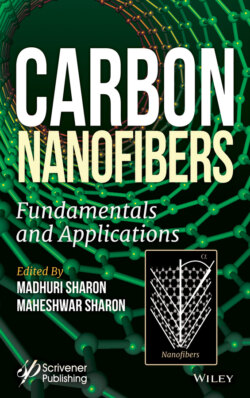Читать книгу Carbon Nanofibers - Группа авторов - Страница 67
3.2.2 Metallic Nanoparticles (NP) as Catalyst
ОглавлениеAbout two-thirds of chemical elements are metals. Using the molecular orbital description, the generation of a metallic material can simply be understood as the formation of an infinitely extended molecular orbital, leading to energy bands. The development of a metallic band structure requires a minimum number of electronic levels, which have to be very similar in energy so that electrons can move by only thermal activation. The most important properties of a metal are:
Its ability to transport electrons, i.e., the property of conductivity: The conductivity is based on the relation between occupied and unoccupied electronic bands, as electrons can become mobile only if the energy band of which they are part is not fully occupied. Most of the d-type transition metals are characterized by only partially filled d-orbitals so that incompletely filled bands result in any case. d10 elements, such as palladium, platinum or gold, have nearby s-bands that can be used for electron transport.
Magnetism: The existence of unpaired electrons is a condition for magnetism; however, only the uniform orientation of free spins over a large area results in ferromagnetism (for example, the well-known ferromagnetism of iron, cobalt and nickel); while non-oriented free spins produce paramagnetic materials (for example, copper and gold).
Metallic NPs, also called nanoclusters, are pieces of metal at the nanometer scale. They can be nanocrystalline, aggregates of crystallites or single crystallites (nanocrystals). Due to the number of bound metal atoms they contain, metallic nanoparticles display intermediate electronic energy levels in comparison with molecules and metal bulks. (As a result, particular physical and chemical properties are expected for metallic nanoparticles that can lead to applications in various areas such as in catalysis [4]. Metallic nanoparticles are generally considered as intermediate species between metal complexes and metal surfaces, and the term “nanocatalyst” is now commonly used to describe them.
For synthesizing carbon nanomaterials (CNMs), typically nanometer-sized metal particles are required to enable hydrocarbon decomposition at a lower temperature than the spontaneous decomposition temperature of the hydrocarbon [4, 5]. The most commonly used metals are iron, cobalt and nickel for two main reasons: i) the high solubility of carbon in these metals at high temperatures, and ii) the high carbon diffusion rate in these metals. Besides that, the high melting point and low equilibrium-vapor pressure of these metals offer a wide temperature window of CVD for a wide range of carbon precursors [6].
Nanoparticles consisting of small metal or metal oxide crystallites in the range of a few nanometers (1–100 nm) are important for catalysis and adsorption. Nanoparticles have higher effective surface area and improved physicochemical properties giving better performance. The uniform shape and size of catalysts are particularly important for structure-sensitive reactions where different types of surface metal atoms, such as corners, edges or terrace atoms, possess quite different properties. Menezes et al. (2013) have studied the effect of particle size on catalytic activity of titania-supported Au-Ag (1:1) nanoparticles for CO oxidation. They observed that reactivity of the catalysts increased as size of the nanometals decreased [7].
